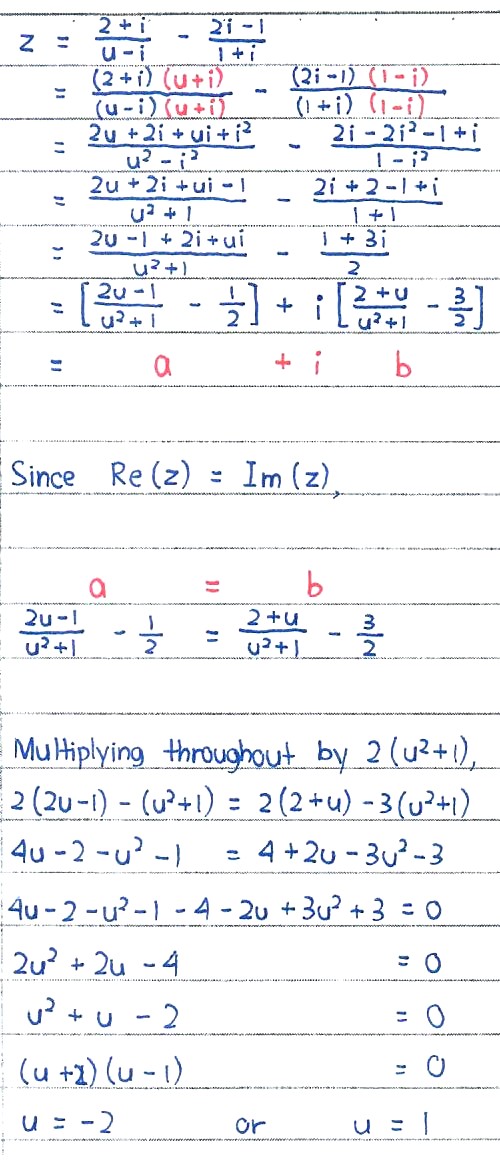Eric Nicholas K's answer to Xiang Ning's Junior College 2 H2 Maths Singapore question.
done
{{ upvoteCount }} Upvotes
clear
{{ downvoteCount * -1 }} Downvotes
A good way to start out this question is by rationalising the denominator to make the denominator a real number (just as we would rationalise a square root in the denominator to eliminate any square root in the denominator; the imaginary number i, which is the square root of -1, is after all, a surd as well).
Once we make the denominators real and simplify the terms, we proceed to split up the terms into their real components and their imaginary components (just as magnets can separate magnetic materials from non-magnetic materials).
We proceed to equate the real components and the imaginary components together since it is given that they are equal.
Once we make the denominators real and simplify the terms, we proceed to split up the terms into their real components and their imaginary components (just as magnets can separate magnetic materials from non-magnetic materials).
We proceed to equate the real components and the imaginary components together since it is given that they are equal.
Date Posted:
4 years ago
The case u = 1 leads to z = 0 + 0i, which is a perfect zero number, with no real part and no imaginary part (and hence, the real component equals the imaginary component).
The case u = -2 leads to both the real component and the imaginary component being -1.5.
The case u = -2 leads to both the real component and the imaginary component being -1.5.


